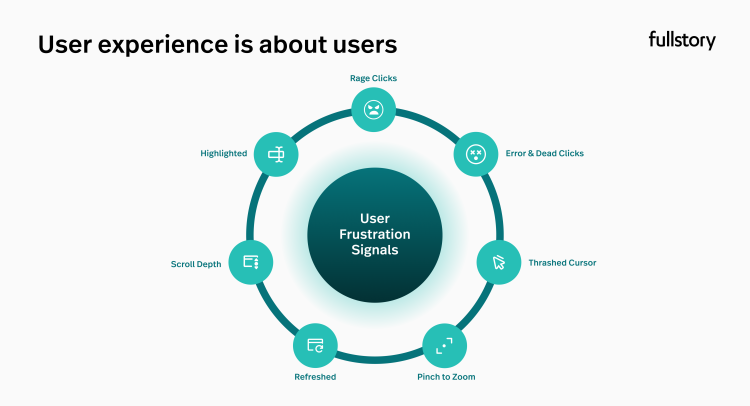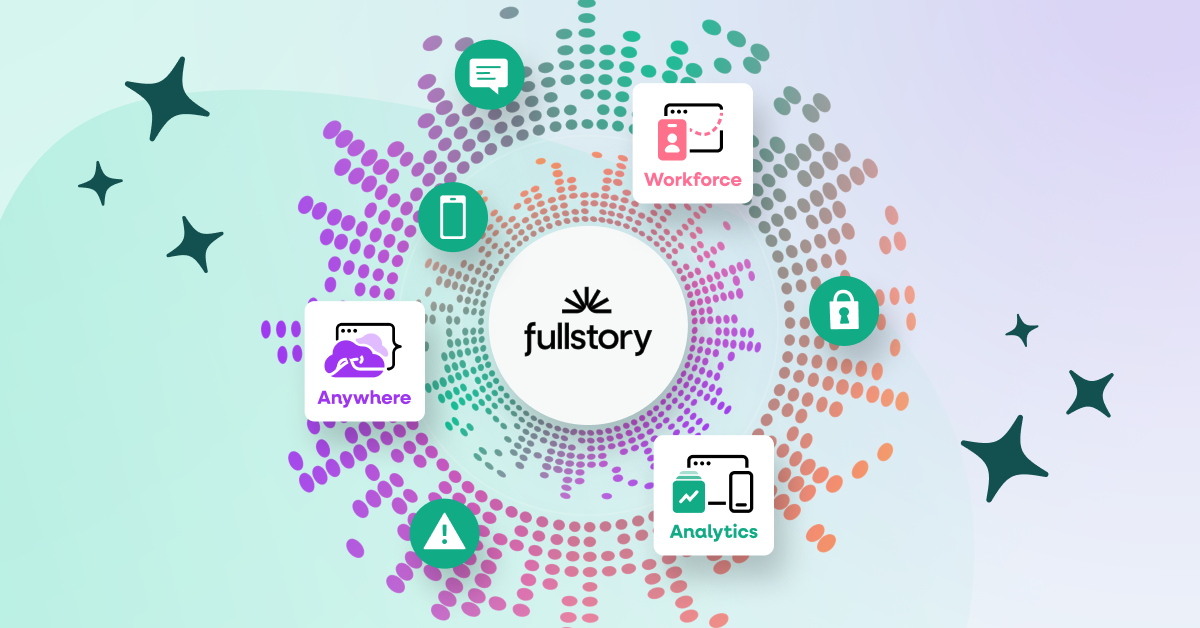Are customers getting upset while using your site or app? And, more importantly, how do you know they're getting frustrated?
With the right tools, digital frustration is pretty easy to spot. Are customers thrashing their mouse on your website or frantically clicking in various places in your app? Are they zooming in or out on elements repeatedly? Actions like these are evidence of user frustration and can point to issues with your digital experience that need to be addressed.
Below, we’ll cover what frustrated user sessions are, how to find them, and how to determine what changes will reduce frustration.
What is a frustrated session?
A frustrated session might include:
A website that fails to load, or doesn’t load quickly enough
An feature or button that doesn’t work properly
Any session where something doesn’t do what a user reasonably expect it to do
These problematic sessions can be quickly identified through frustration signals, like dead clicks, rage clicks, or error clicks—or any other mouse movements happening because of frustration.
Failing to address frustration signals can be detrimental, causing site abandonment or worse, an uptick in frustrated support tickets, or negative reviews.
Combining quantitative and qualitative to analyze your website can help you quickly find frustrated user sessions, understand what’s going wrong, and prioritize how to alleviate user friction.
How to find frustrated sessions
Many companies rely on customer feedback to understand what is frustrating their end-users. But when you rely only on only customer interviews and one-off support tickets, you miss details and don’t see the full picture.
With a DXI solution, machine learning highlights the most frustrated sessions contained in each search or segment you create.
Using session replay, you can view logged user events like mouse movements, clicks, page visits, scrolling, tapping, and other frustration signals, as a reproduction of what the user actually did on the site or app.
How to eliminate false positives in frustrated sessions
Sometimes, user behavior might register as frustration, but the user is actually behaving in exactly the way they were meant to.
For example, you may have a calendar widget that a user rapidly clicks on to scroll through months, which are logged as Rage Clicks in Fullstory. To ensure that your data remains accurate, Fullstory lets you exclude instances like these from being classified as frustration. Simply update your settings to tell Fullstory which interactions shouldn’t be classified as frustration.
Find and fix frustration signals
Finding the areas of your site or app that are causing user frustration is the first step toward fixing issues and creating a better overall user experience.
Built on a powerful analytics engine, Fullstory uses a combination of frustration signals to find "frustration events" and then shows you the sessions that had the highest numbers of frustration events.
A DXI platform or other experience analytics will help businesses continuously improve the digital user experience across sites and apps—and reduce frustrated sessions so you can have happier customers and greater loyalty.
If you haven’t used the Digital Experience Intelligence solution at Fullstory, you can get started right away by requesting a demo and trying it yourself.





